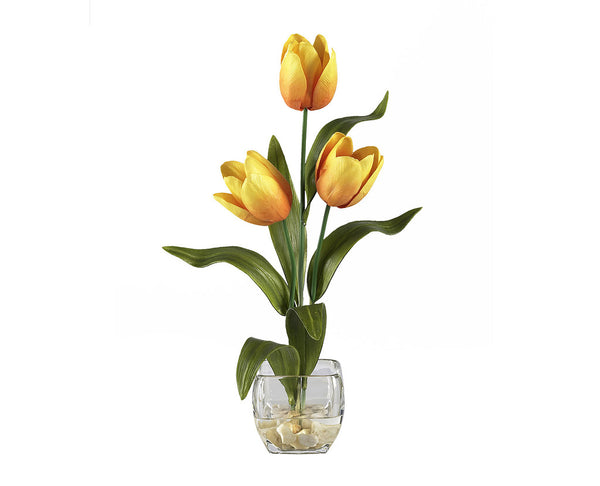 The Tulip is a perennial, bulbous plant noted for its rather showy flowers. There are 109 species of tulips that range in their native habitat from Southern Europe to Israel, North Africa and Iran and going east to the northwestern areas of China.
The Tulip is a perennial, bulbous plant noted for its rather showy flowers. There are 109 species of tulips that range in their native habitat from Southern Europe to Israel, North Africa and Iran and going east to the northwestern areas of China.
Tulips can best be described as bulbous flowers with broad, oval leaves that caress the center bulb when in bloom. While a few tulip plants have multiple flowers, most only have one that blooms in the spring. Along with roses and hydrangeas, tulips are considered one of the most romantic flowers.
Of the 109 varieties of the tulip, they are generally divided into 15 separate divisions including the Single Early, Double Early, Triumph, Darwin Hybrid, Fringed, and Lily-Flowered just to name a few.

While many people associate tulips with the Netherlands, the origin of the name actually comes from the Ottoman Empire where they were cultivated. The name itself in Persian means “Beloved” which also describes how the flower was used in giving a red tulip that declared love for another. In fact, Iran uses the tulip as a popular symbol on their currency
Tulips are highly popular in flower arrangements thanks to their wide variety of colors and large, beautiful bulbs. The meaning and purpose of tulips are centered on their colors. Purple tulips are a sign of royalty or nobility. While red tulips symbolize love, white tulips are used to express forgiveness, respect and remembrance.
Quite often white tulips are used for more solemn occasions, although a garden of white tulips is a symbol for heaven on earth. Blue tulips are a sign of peace and tranquility, a gift of blue tulips displays the trust you have in another. Yellow generally represents friendship, orange is used for times of happiness and pink demonstrates care and attachment, a state of perfect happiness.
The tulip is one of the most popular flowers featuring a wide variety of colors and shapes which have made them loved the world over.



